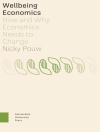Written for students and researchers who wish to understand the conceptual and practical aspects of sampling, this book is designed to be accessible without requiring advanced statistical training. It covers a wide range of topics, from the basics of sampling to special topics such as sampling rare populations, sampling organizational populations, and sampling visitors to a place. Using cases and examples to illustrate sampling principles and procedures, the book thoroughly covers the fundamentals of modern survey sampling, and addresses recent changes in the survey environment such as declining response rates, the rise of Internet surveys, the need to accommodate cell phones in telephone surveys, and emerging uses of social media and big data.
Зміст
Section I: SAMPLING BASICS
Chapter 1: Introduction to Sampling
1.1 Introduction
1.2 A Brief History of Sampling
1.3 Sampling Concepts
1.3.1 Sources of Research Error
1.3.2 Probability versus Nonprobability Samples
1.4 Guidelines for Good Sampling
1.5 Chapter Summary and Overview of Book
Chapter 2: Defining and Framing the Population
2.1 Defining the Population
2.1.1 Defining Population Units
2.1.2 Setting Population Boundaries
2.2 Framing the Population
2.2.1 Obtaining a List
2.2.2 Problems With Lists
2.2.3 Coping With Omissions
2.2.4 Coping With Ineligibles
2.2.5 Coping With Duplications
2.2.6 Coping With Clustering
2.2.7 Framing Populations Without a List
2.3 Chapter Summary
Chapter 3: Drawing the Sample and Executing the
3.1 Drawing the Sample
3.1.1 Simple Random Sampling
3.1.2 Systematic Sampling
3.1.3 Physical Sampling
3.2 Executing the Research
3.2.1 Controlling Nonresponse Bias
3.2.2 Calculating Response Rates
3.3 Chapter summary
Section II: SAMPLE SIZE AND SAMPLE EFFICIENCY
Chapter 4: Setting Sample Size
4.1 Sampling Error Illustrated
4.2 Sample Size Based on Confidence Intervals
4.2.1 Computational Examples
4.2.2 How to Estimate s or p
4.3 Sample Size Based on Hypothesis Testing Power
4.4 Sample Size Based on the Value of Information
4.4.1 Why Information Has Value
4.4.2 Factors Related to the Value of Information
4.4.3 Sample Size and the Value of Information
4.5 Informal Methods for Setting Sample Size
4.5.1 Using Previous or Typical Sample Sizes
4.5.2 Using the Magic Number
4.5.3 Anticipating Subgroup Analyses
4.5.4 Using Resource Limitations
4.6 Chapter Summary
Chapter 5: Stratified Sampling
5.1 When Should Stratified Samples Be Used?
5.1.1 The Strata Are of Direct Interest
5.1.2 Variances Differ Across Strata
5.1.3 Costs Differ Across Strata
5.1.4 Prior Information Differs Across Strata
5.2 Other Uses of Stratification
5.3 How to Draw a Stratified Sample
5.4 Chapter Summary
Chapter 6: Cluster Sampling
6.1 When Are Cluster Samples Appropriate?
6.1.1 Travel Costs
6.1.2 Fixed Costs
6.1.3 Listing Costs
6.1.4 Locating Special Populations
6.2 Increased Sample Variability as a Result of Clustering
6.2.1 Measuring Homogeneity Within Clusters
6.2.2 Design Effects From Clustering
6.3 Optimum Cluster Size
6.3.1 Typical Cluster Sizes
6.4 Defining Clusters
6.5 How to Draw a Cluster Sample
6.5.1 Drawing Clusters With Equal Probabilities
6.5.2 Drawing Clusters With Probabilities Proportionate to Size
6.5.3 Drawing Stratified Cluster Samples
6.6 Chapter Summary
Section III: ADDITIONAL TOPICS IN SAMPLING
Chapter 7: Estimating Population Characteristics From Samples
7.1 Weighting Sample Data
7.1.1 Should Data Be Weighted?
7.2 Using Models to Guide Sampling and Estimation
7.2.1 Examples of Using Models
7.2.2 Using Models to Reduce the Variance of Estimates
7.2.3 Using Models to Cope With Violations of Probability Sampling Assumptions
7.2.4 Conclusions About the Use of Models
7.3 Measuring the Uncertainty of Estimates From Complex or Nonprobability Samples
7.4 Chapter Summary
Chapter 8: Sampling in Special Contexts
8.1 Sampling for Online Research
8.2 Sampling Visitors to a Place
8.2.1 Selecting Places for Intercept Research
8.2.2 Sampling Visitors Within Places
8.3 Sampling Rare Populations
8.3.1 Telephone Cluster Sampling
8.3.2 Disproportionate Stratified Sampling
8.3.3 Network Sampling
8.3.4 Dual-Frame Sampling
8.3.5 Location Sampling
8.3.6 Online Data Collection for Rare Groups
8.4 Sampling Organizational Populations
8.5 Sampling Groups Such as Influence Groups or Elites
8.6 Panel Sampling
8.6.1 Initial Nonresponse in Panels
8.6.2 Differential Mortality Over Time
8.6.3 Panel Aging
8.6.4 Implications for Panel Sampling
8.6.5 Other Issues in Panel Sampling
8.7 Sampling in International Contexts
8.8 Big Data and Survey Sampling
8.8.1 Big Data as a Survey Complement
8.8.2 Big Data as a Survey Replacement
8.9 Incorporating Smartphones, Social Media, and Technological Changes
8.9.1 Smartphones and Surveys
8.9.2 Social Media and Surveys
8.9.3 A General Framework for Incorporating New Technologies
8.10 Chapter Summary
Chapter 9: Evaluating Samples
9.1 The Sample Report
9.2 How Good Must the Sample Be?
9.2.1 Concepts of Representation and Error
9.2.2 Requirements for Sample Quality Across Research Contexts
9.3 Chapter Summary
Про автора
Johnny Blair is an independent consultant. Previously, he was a principal scientist and senior survey methodologist at Abt Associates Inc., where he directed the Cognitive Testing Laboratory. He has conducted research on sampling rare populations, measurement error in proxy reporting, and cognitive interviewing for pretesting survey instruments. He has been a member of the Design and Analysis Committee, which provides statistical advice for the National Assessment of Educational Progress (NAEP), often referred to as The Nation’s Report Card. He has served on National Research Council panels to assess major government-sponsored surveys. His research publications include many book chapters and over 50 articles in academic journals and in the Proceedings of the Joint Statistical Meetings of the American Statistical Association Section on Survey Methods. He served two terms on the editorial board of Public Opinion Quarterly and is a frequent peer reviewer for several other research journals.












